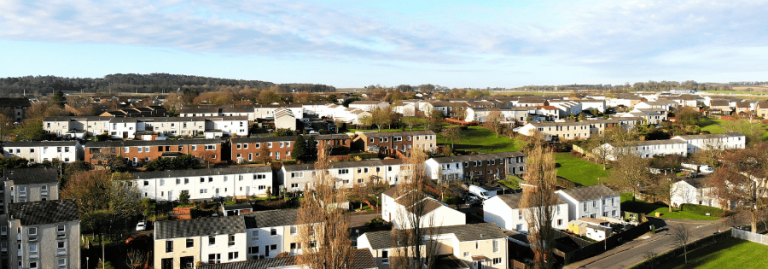Housing associations are on the frontline of growing community tensions — it is time to start acting like it

Janani Paramsothy, of Newbridge Advisors, explores how the housing sector should respond to the issues raised by the temporary accommodation of asylum seekers in hotels. (This article was first published by Housing Diversity Network in August 2025.)
It might not be the fight the sector wants, but it is a fight that has arrived at its doorstep, and it is time to start thinking seriously about the implications.
The virtual ink had not yet dried on the commemorative articles reflecting on last year’s racist riots, when the far right kicked into action once more, targeting hotels housing asylum seekers. While the impacts and drivers have been different, it is clear that the issue is here to stay, requiring considered and consistent action.
It seems that much of the anger stems from the housing crisis itself and the dearth of housing for those who need it. One might consider this legitimate anger and despair, if not supportive of the clear xenophobia at play.
Voiceless people are being blamed for the 1.3 million on social housing waiting lists and 170,000 children in temporary accommodation in England. We all know that these are not the real issues, but they are easy political footballs.
For years, the idea has been seeded that it is immigrants and not public funding decisions or inequality causing the lack of homes, NHS appointments and school places. Having learnt seemingly nothing from the debacle of the country’s exit from the European Union, politicians have persisted with endorsing inaccurate news to deflect blame.
Asylum seeking is not a crime
Anyone is entitled to seek asylum in the UK, regardless of how they got here. This is a core human right, enshrined in international law, notably in the 1951 Refugee Convention.
My own parents were asylum seekers, fleeing ethnic cleansing in Sri Lanka in the 1980s, and I have spent a career working with asylum seekers since. They are, for the large part, highly traumatised and therefore vulnerable individuals and families, with direct experience of unspeakable horrors. In most cases, a housing crisis would be a dream to contend with, in comparison to what they have arrived from.
The government has a statutory duty to provide accommodation while asylum claims are being processed. This is in large part because asylum seekers have very little independent means and are barred from work or access to benefits.
It is in this context that the groups of thugs threatening to burn them down in their temporary housing are acting. Beyond the clear and apparent dangers, it is also highly triggering and a damning indictment of where British society has reached.
What does this have to do with the housing sector?
The issue stands at the heart of community building, and by extension, of community cohesion. Taking this responsibility seriously means tackling the issues head on, investing in education and prevention.
This needs to go beyond simply distinguishing ourselves from the problem, or ensuring it does not become a problem within our patches by directing it elsewhere. While this might seem like the easiest option in the immediate term, it does nothing to resolve the underlying causes.
What can housing associations do instead?
- It is critical that housing associations and providers implement a zero-tolerance policy towards racism and xenophobia. A critical part of this is naming the behaviour for what it is and clearly communicating the organisation’s stance internally and externally.
- Investing in public education and awareness material, starting with staff and customers. For example, there should be no mention of ‘illegal immigrants’ in the housing sector, and greater understanding of why asylum seekers are supported with accommodation while they go through the process.
- Ensuring adequate support is in place for staff and customers who might be at risk because of fascist activity. This would include identifying the people most at risk and putting in place mitigations, additional protections and wellbeing programmes based on their bespoke needs.
- Standing in solidarity with those providing housing to asylum seekers by not supporting identification through the process of elimination.
- Interrogating the diversity of those making decisions about community investment, engagement and EDI. Far too often, these spaces are dominated by groups of people with shared characteristics, leaving out critical lived experience and variety of viewpoint. This doesn’t just need to be about recruitment campaigns; it can also be about how you consult on your communications and ideas in this space, and whose views we give weight to.
For a fuller checklist and more ideas, please see the checklist compiled by HDN during the 2024 riots here. Contact the author at Janani.paramsothy@newbridge.co.uk







